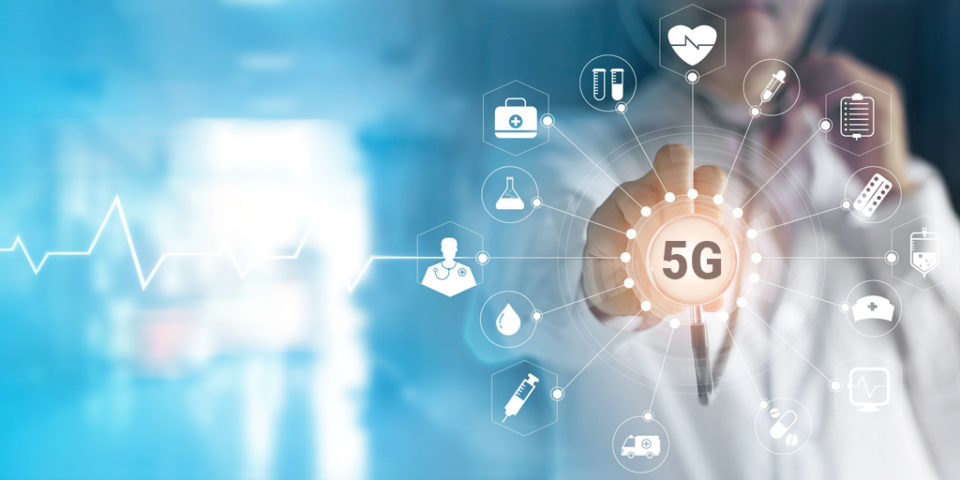With latency reduced to an almost instantaneous 1 milliseconds range between devices, high throughput and ultra-reliable communications 5G will accelerate the digital transformation of the healthcare sector. 5G is expected to act as a major growth driver leading to lower costs and increased value-based care instead of volume-based care.
- Increase widespread adoption of remote healthcare
Telemedicine requires a lot of bandwidth for real-time UHD video communications. With 5G, huge data files with medical imagery like MRIs or video feeds from a remote ultrasound, endoscope, electrocardiogram, etc can be transported quickly and reliably. It can help doctors conduct remote examinations more efficiently, leading to improved patient care. With networks that can deliver 8K videos, telemedicine will also have the capacity to provide care in locations where it couldn’t before.
For doctors and other medical practitioners, 5G technology can help them not only perform their jobs more effectively but also do things they couldn’t do before. The ultimate example is remote surgery, in which surgeons control robots from far away to perform an operation. Now that 5G solves problems like video lag, jitter, and remote-control delay remote surgery is within reach.
- Provide reliable lifesaving communications to emergency services
A road accident for instance often creates huge traffic jams and people start phoning home to say they will be late, surf the internet while waiting and hereby generating important network traffic surge. 5G will allow prioritizing emergency communications, guaranteeing mission-critical information exchanges and hence save lives.
One of the new capabilities unlocked by 5G is the ability to slice the mobile network and reserve a slice exclusively for emergency response services. This network slice dedicated to first responders will guarantee reliable mobile connections, network availability, and confidentiality especially when the existing commercial networks are already overwhelmed with high volume traffic.
High-quality video feeds from the ambulance to the awaiting emergency department will allow to remotely monitor the patient for conditions that are not easily sensed and often lack in the reports provided by the paramedics on-site such as skin pallor and patient demeanor.
Experienced remote specialists can also connect with newly hired first responders and work together in real-time. All of this will drive faster positive emergency care outcomes.
- Ensure enhanced patient care
When providing care to a patient, seconds can matter to save lives, and unfortunately poor network quality can delay urgent patient care. 5G will improve accessibility, quality of coverage, and convenience. It will hereby facilitate access to healthcare in rural areas where competent medical practitioners are sparse. It will give patients the chance to have access to specialists otherwise not available in these rural communities and will provide a better connection and accessibility for more people than ever before.
By harnessing the power of both 5G connectivity and IoT sensors, medical professionals can monitor and quickly respond to patient emergencies in person or via remote healthcare.
- Offer new training methods
5G contributes to a real democratization of knowledge. Different specialists, not necessarily in the same place, will all be able to work together and coach less specialized colleagues remotely.
5G not only impacts the way doctors learn by making it possible to use highly sophisticated assisted and augmented reality applications but makes it also possible for students to be virtually transported into an operating room and get near real-time views of delicate procedures.
Within the framework of the European project 5G-TOURS (5G smarT mObility, media, and e-health for tURists and citizenS) AMA is working side by side with partners such as Philips, Bcom, CHU Rennes, Orange, Ericsson, Nokia and Samsung on 5G-enabled solutions for safe cities.

